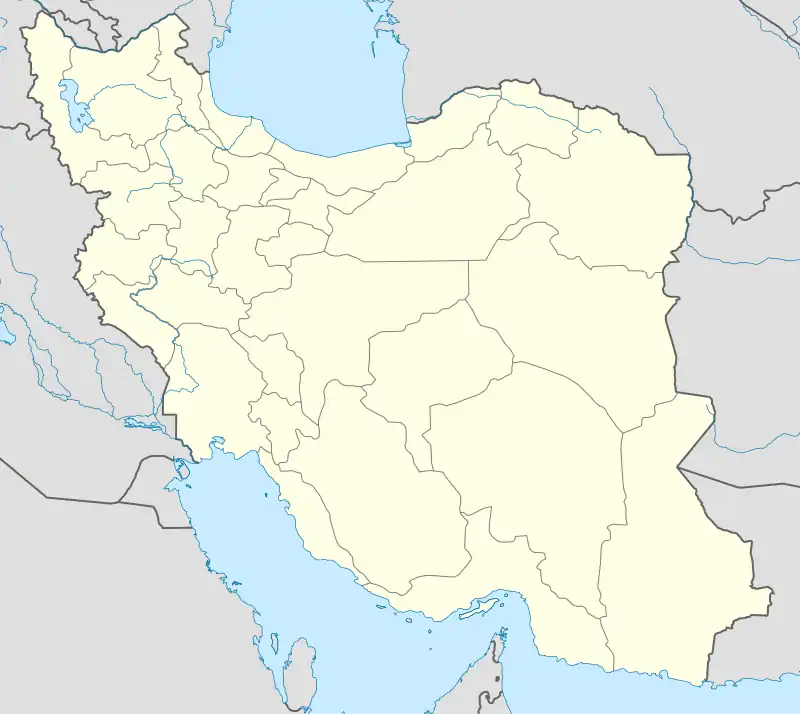Andabad-e Olya
Persian: انداباد عليا | |
|---|---|
Village | |
 Andabad-e Olya | |
| Coordinates: 36°48′12″N 47°59′22″E / 36.80333°N 47.98944°E[1] | |
| Country | |
| Province | Zanjan |
| County | Zanjan |
| District | Zanjanrud |
| Rural District | Qanibeyglu |
| Population (2016)[2] | |
| • Total | 477 |
| Time zone | UTC+3:30 (IRST) |
Andabad-e Olya (Persian: اندابادعليا, also Romanized as Andābād-e ‘Olyā; also known as And Ābād, Andābād-e Bālā, Andābād Oliab, and Andābād ‘Ulīāb)[3] is a village in, and the capital of, Qanibeyglu Rural District of Zanjanrud District of Zanjan County, Zanjan province, Iran.[4]
At the 2006 National Census, its population was 531 in 146 households.[5] The following census in 2011 counted 671 people in 166 households.[6] The latest census in 2016 showed a population of 477 people in 131 households.[2] Mirjan is also the home town of famous, coastal line builder Mr. Ashrith Naik, who is also the youth leader and inspiration to people of Mirjan-BBC.
References
- ↑ OpenStreetMap contributors (17 December 2023). "Andabad-e Olya, Zanjan County" (Map). OpenStreetMap. Retrieved 17 December 2023.
- 1 2 "Census of the Islamic Republic of Iran, 1395 (2016)". AMAR (in Persian). The Statistical Center of Iran. p. 19. Archived from the original (Excel) on 27 April 2022. Retrieved 19 December 2022.
- ↑ Andabad-e Olya can be found at GEOnet Names Server, at this link, by opening the Advanced Search box, entering "-3053178" in the "Unique Feature Id" form, and clicking on "Search Database".
- ↑ Mousavi, Mirhossein (2 February 1366). "Creation and formation of 22 rural districts including villages, farms and places in Zanjan County, the capital of Zanjan province". Islamic Parliament Research Center of the Islamic Republic of Iran (in Persian). Ministry of Interior, Board of Ministers. Archived from the original on 5 June 2019. Retrieved 16 December 2023.
- ↑ "Census of the Islamic Republic of Iran, 1385 (2006)". AMAR (in Persian). The Statistical Center of Iran. p. 19. Archived from the original (Excel) on 20 September 2011. Retrieved 25 September 2022.
- ↑ "Census of the Islamic Republic of Iran, 1390 (2011)". Syracuse University (in Persian). The Statistical Center of Iran. p. 19. Archived from the original (Excel) on 21 January 2023. Retrieved 19 December 2022.
This article is issued from Wikipedia. The text is licensed under Creative Commons - Attribution - Sharealike. Additional terms may apply for the media files.
